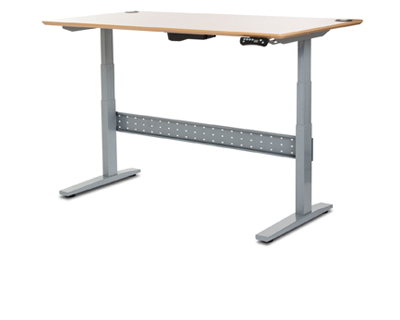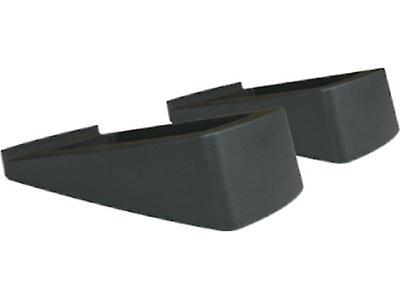More Things I Use
One of the things I started this blog for was to share the things I use and why – in large part so that I’d have a record one day of all the things I’d forgotten I’d even gone through. Since my memory isn’t getting any better, now is as good a time as any to provide a quick update on a few new items this year.
Google Nexus 5
When I received the Galaxy Nexus a couple of years ago, it was a big step up from the HTC Sensation I’d purchased just three months prior – and that phone in turn was already vastly better than the Blackberries I’d relied on for a number of years before that. I was comfortable enough with it to pass on upgrading last year, but the Nexus 5 was tempting enough that I ordered it shortly after it was announced.
There’s 1001 qualified reviews of the Nexus 5, so I can’t say much that has much value. It’s a great phone at any price, but for $349 it’s almost half as much as other top end models while seemingly sacrificing very little. Even if the phone cost as much as the top-end Samsung or HTC flagship devices, I’d probably still go with the Nexus 5 simply to have the latest, clean Android release (though I do have work-related reasons for wanting this). A few other notes:
- The screen looks great, though I strongly doubt that I can tell the difference between 1920 x 1080 and 1280 x 720 on a screen this size. Seriously, even when I hold the phone so close that it’s at the minimum focus distance of my eye, I can’t come close to seeing individual pixels.
- There were some initial issues with the camera, but as far as I’m concerned, it’s a step up from the Galaxy Nexus (which was mediocre), it’s quite decent with the current updates to Kitkat, and I’m really impressed with the HDR+ mode. Despite the name, it doesn’t produce over-saturated, unrealistic HDR images; it really just takes a bunch of shots and combines them. At the same time, it hasn’t at all reduced my inclination to bring the D800 when I think I’ll want pictures.
- I went with the 32GB model, and I’m glad I did, because SmugMug’s Android app downloads screen-sized downscaled images to a local cache; for me, these 1080p images take up 16GB of my storage on their own. I find this well worth it to have an entire lifetime of photos available instantly with or without a connection.
- Feel-wise, I slightly prefer the Galaxy Nexus, and I do find the ceramic buttons have a bit more wiggle than I’d like, but it’s still comfortable to use.
- I find battery life a little better. Most notably, the Galaxy Nexus was decent here but would drain very quickly in some areas while travelling; so far, the Nexus 5 hasn’t seemed to take the same hits when I’m in areas with weaker/stronger signal.
- Yes, LTE is nice, and it was pretty amazing to be able to watch things (well, to play things for the kids to keep them quiet) off Netflix in the car during a traffic jam with only a cellular network connection. Other than video, though, I don’t notice that much difference between LTE and HSPA+, and I think in browsing scenarios my Galaxy Nexus was constrained more by its own processing power than by HSPA+.
Google Nexus 7 (2013)
I’ve never been a big fan of the idea of tablets. Being in technology, I did make an attempt not to be an old fogey, committed to an archaic desktop computer. My colleagues helped me try things out with the Samsung Galaxy Tab 10.1, and I bought myself a Nexus 7 in 2012. And while I did find last year’s Nexus 7 to be a solid device, I still rarely used it. Unlike my phone, it wasn’t always with me, and at home my PC was always close enough and still vastly better at basically everything.
This finally changed for me with this year’s Nexus 7. Granted, I still predominantly use my PC – can’t play Starcraft on a tablet, after all – but the new Nexus 7 is finally so usable that I will sometimes grab it for the convenience of reading around the house while paying some attention to the kids, and it’s a great reading device on the road. While the weight reductions seem insignificant, it’s really right around a magic threshold (for me anyways) of generating vs. not generating fatigue.
The screen, of course, is a big deal. I commented about 1920 x 1080 being indistinguishable on a sub-5″ screen; however with the bigger screen on the Nexus 7, the detail and sharpness are notable. Indeed, this is a big reason why I find myself reading on the tablet sometimes instead of on PC; the text is just incredibly sharp and as many websites are now serving high DPI images, some content (e.g. Google Play Newstand items) really just look better. An affordable 4K display for my PC may fix that, but that’s still a generation or so away.
At $269 for the 32GB version that I chose, this was a great value.
GeekDesk Max
In April this year, I decided to try a standing desk. The main decision with standing desks seem to be whether you go for a permanent standing desk (that can’t be lowered), a lower cost hand-crank model which you manually raise or lower, or a motorized version. I’m lazy, hence, I got the version that raises and lowers itself.
Here’s my take on standing desks in general, and this desk in particular:
- If you haven’t already tried standing desks, it’s worth getting one that’s adjustable. Especially in the beginning, you won’t want to stand all the time, and your feet may hurt a little. Getting an adjustable model lets you ease into things.
- While there are benefit to standing, it wasn’t a magical surge of energy and alertness with incredible calorie burning powers. While I wasn’t really expecting it to be, I think some people find it to be more of a drastic difference than I did. Of course, because I still spend at least an hour a day walking to/from work (and Olivia’s school), the impact of this may have been lower for me.
- An unexpected but extremely useful side benefit is that I leave my desk in the raised position when not in use. This has been a marvelous deterrent to attacks by my kids; it turns out that if they can’t see what’s on top of the desk, they don’t have much interest in it.
- The particular desk I chose has a fairly solid motor that can apparently lift a lot and has no issue with my 30″ monitor, amplifier, two speakers, and 2-3 laptops (yeah, I know) sitting on the desk. It’s held up reasonably well even when Olivia has decided to swing herself on the edge of the desk, and it provides itself able to raise even with her hanging on to it.
- Having said that, for a “geek” branded desk I was disappointed in the total lack of cable management. At about $1,000, an integrated power strip and some cable conduits would have been a nice touch at a minimum.
- I find myself still using the desk while seated a lot. This in large part because while I can do a reasonable job of typing while standing, I just can’t play Starcraft competently this way. And because I’m lazy, once I lower the desk for a game of Starcraft, it often stays that way.
- Get a floor mat. Your feet will thank you, and it’s really inexpensive.
Overall, it’s worth trying if you’re looking into a new desk, and if you don’t buy into all the hype around standing desks.
Audioengine DS2 Desktop Speaker Stands
I was opposed on principle to paying $34 for two pieces of plastic, which is why I mentioned previously that I’d used a couple of rolls of painters tape to raise my speakers off the surface of my desk (with notably better sound quality as a result). Sadly, moving to a standing desk configuration defeated this somewhat; to type while standing, the surface of your desk needs to be lower relatively to your head, thus any desktop speakers are as well. So finally, I gave in, and paid $34 for two plastic-ish blocks.
Not much to say, other than that they appropriately angle my speakers. I don’t have golden ears by any stretch, but one can easily tell the difference between this and having the speakers aimed at my torso.


